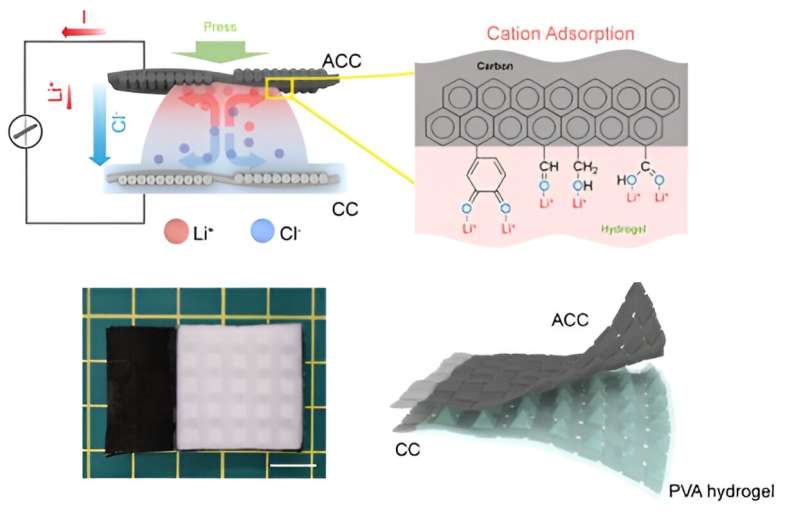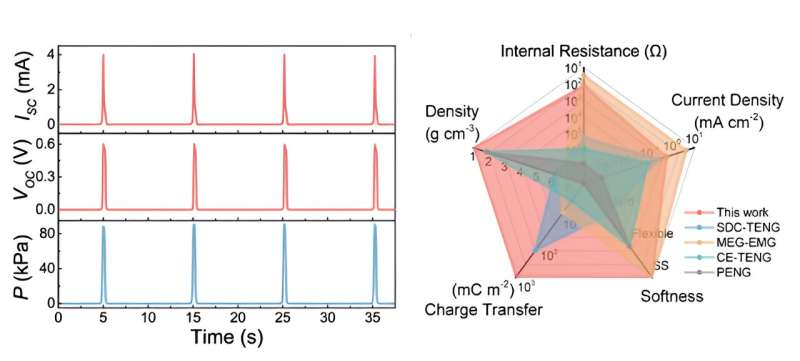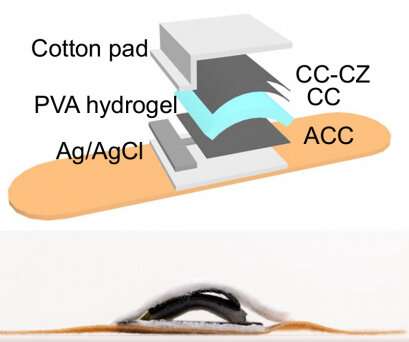This article has been reviewed according to Science X's editorial process and policies. Editors have highlighted the following attributes while ensuring the content's credibility:
fact-checked
peer-reviewed publication
trusted source
proofread
Mechanical engineers develop miniaturized, hydrogel-based electric generators for biomedical devices

Mechanoelectrical energy conversion offers a promising solution for powering miniaturized biomedical devices, such as cardiac pacemakers, brain stimulators, wearable drug delivery systems, and more.
Although there have been various proposals for miniaturized mechanoelectrical converters in the past decade, the challenge of achieving both high electrical output and body-conformal device structures remains.
A research team led by Professor Lizhi Xu from the Department of Mechanical Engineering in the Faculty of Engineering at the University of Hong Kong (HKU) has developed a high-performance mechanoelectrical energy converter based on hydrogels, a class of water-rich soft polymeric materials.
The researchers used an ion-loaded hydrogel sandwiched between two electrodes to construct the electric generator. The study was published in Nature Communications, titled "A high-current hydrogel generator with engineered mechanoionic asymmetry."

"The key is to use structural and chemical asymmetry to amplify the separation of charges in the ion-loaded hydrogel," said Professor Xu. "With these asymmetric designs, the electrical output of the hydrogel generators was enhanced by orders of magnitudes, which is important for the powering of miniaturized biomedical devices."
Under mechanical compression applied to the device, the positively charged ions and negatively charged ions in the hydrogel will move at different rates. The separation of electric charges will generate voltage and current, which can be utilized by the external circuit.
The research team further exploited asymmetric designs in the device to greatly enhance the electrical output, reaching an unusually high level of 5.5mA/m2 and 916 mC/m2 per cycle, far beyond those of other systems. For example, it is about 10-fold higher than triboelectric nanogenerators and other flexible generators.

"Hydrogels are good body-conformal device structures because they are soft, flexible, and can be designed to mimic the properties of biological tissues. They are highly biocompatible and able to conform to the shape of various tissues in the body," Professor Xu said.
In the study, a soft patch for controlled drug release was demonstrated. The technology can be further applied to many other biomedical devices such as cardiac pacemaker, wearable health monitors, VR/AR interfaces, etc.
More information: Hongzhen Liu et al, A high-current hydrogel generator with engineered mechanoionic asymmetry, Nature Communications (2024). DOI: 10.1038/s41467-024-45931-7




















